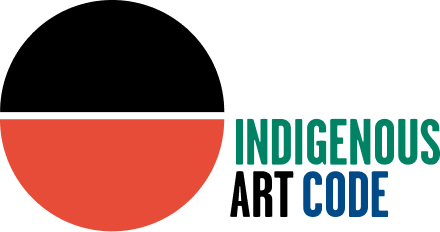In 2016, a campaign was created to address the concern of widespread sale of works that have the ‘look and feel’ of being Indigenous but actually have no connection to Aboriginal and Torres Strait Islander communities.
Fake Art Harms Culture Campaign
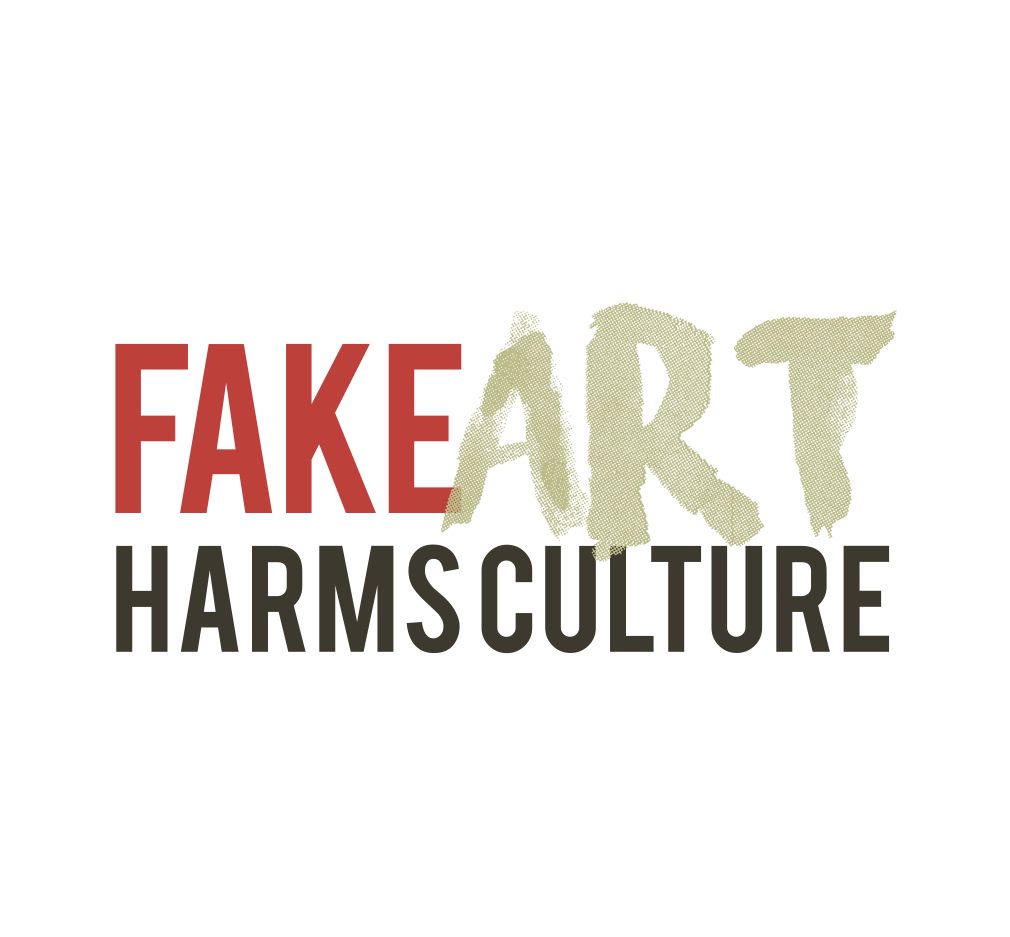
In response to Aboriginal and Torres Strait Islander artists asking ‘what are we going to do about fake art and souvenirs?’ the Indigenous Art Code, alongside Arts Law Centre of Australia and the Copyright Agency, launched the Fake Art Harms Culture campaign in 2016.
A mystery shopping exercise in tourist locations in various capital cities found very large numbers of inauthentic items. Estimates suggest this is a multi-million dollar industry. These are commercially produced goods, generally aimed at the tourist market, often made from non-traditional materials and featuring culturally inappropriate and appropriative designs with no connection to Aboriginal and/or Torres Strait Islander Culture. They range from bamboo didgeridoos to decorative plates and key rings.
The Fake Art Harms Culture campaign is calling on the Government to tackle the problem of fake ‘Indigenous’ arts and craft being sold in Australia to prevent harm to Aboriginal and Torres Strait Islander artists and communities.

Why is there fake art?
The profile of Indigenous art has grown tremendously in recent decades. This growth has provided earning and income opportunities for Aboriginal and Torres Strait Islander communities as well as contributed to the preservation and dissemination of their culture.
However, the increased awareness, reputation and value of Indigenous art has also grown the market in fake art products and merchandise, the production of which has a significant negative impact in at least four ways:
- It misappropriates Aboriginal and Torres Strait Islander culture and undermines the role of communities;
- It denies Aboriginal and Torres Strait Islander artists economic and other opportunities;
- It deceives and misleads buyers; and
- It disadvantages ethical businesses who take a culturally empathetic approach to Indigenous art sales.
“The ecosystem, the environment we live in is full of natural resources. Our art is our resource, it belongs to us, we use it in a ceremonial context; it is a resource for our survival. If control of that resource is taken away from us, we cannot meet our cultural obligations; we cannot use it for our families’ benefit. Exploiting our resource needs to be negotiated on our terms, we need to have control of how that’s done.” - Dr Marika, Yolngu (Artist), 2016
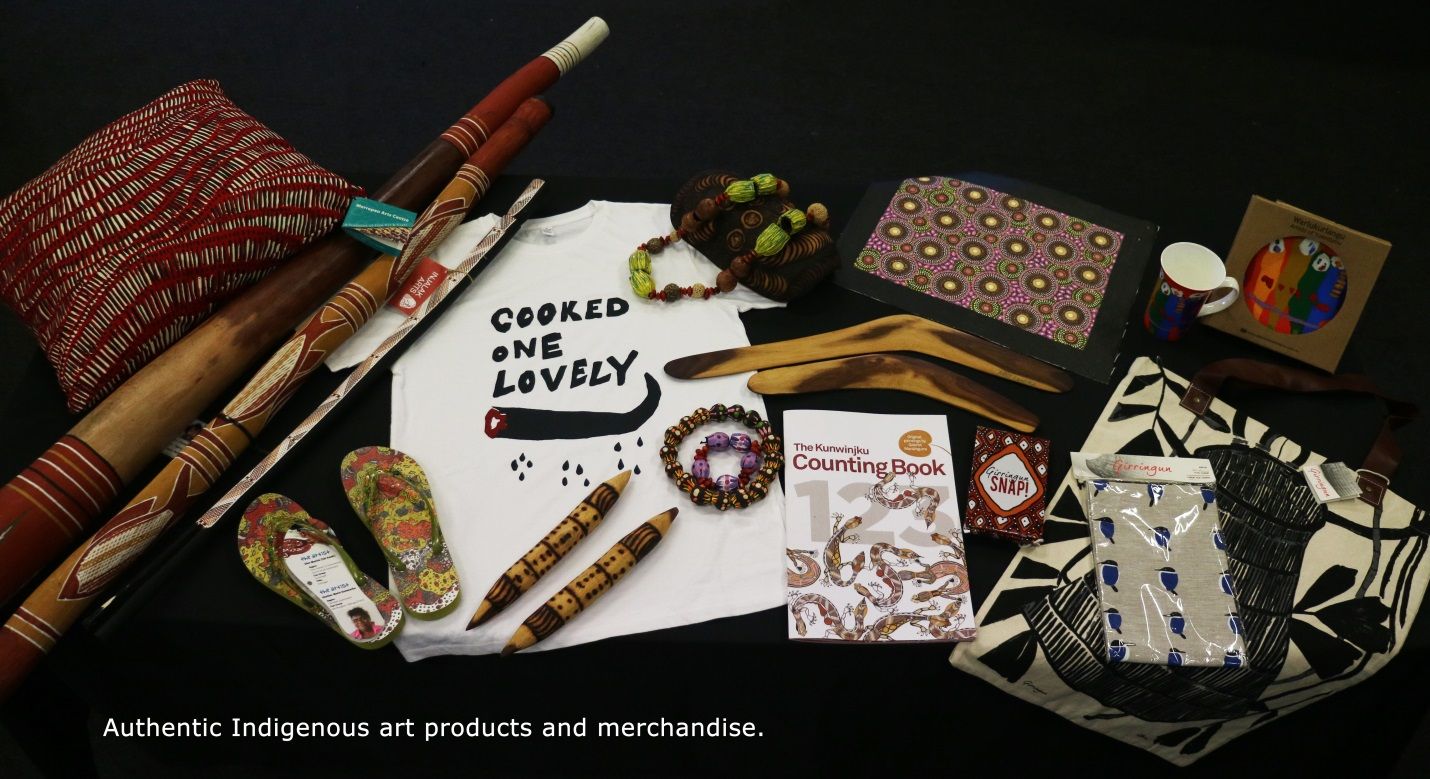
“Our art and culture are very dear to us, they embody the past history of my people, our beliefs today, and our strength to survive. Whilst wanting to protect ourselves and our art and culture for future generations, at the same time we are eager for all the world to witness the beauty and strength of our culture as expressed by our artists. To retain a jealous hold on our cultural heritage is not our desire, but we must realise our responsibility to safeguard this heritage and to ensure that Aboriginals at last achieve the recognition that is universally attributed to all artists.” - Wandjuk Marika, Yolgnu (Artist) 1975
(Excerpt from the statement which Wandjuk Marika published under the title ‘Copyright on Aboriginal Art’ in Aboriginal News Vol. 3 1 Feb. 1975 pp7-8.)
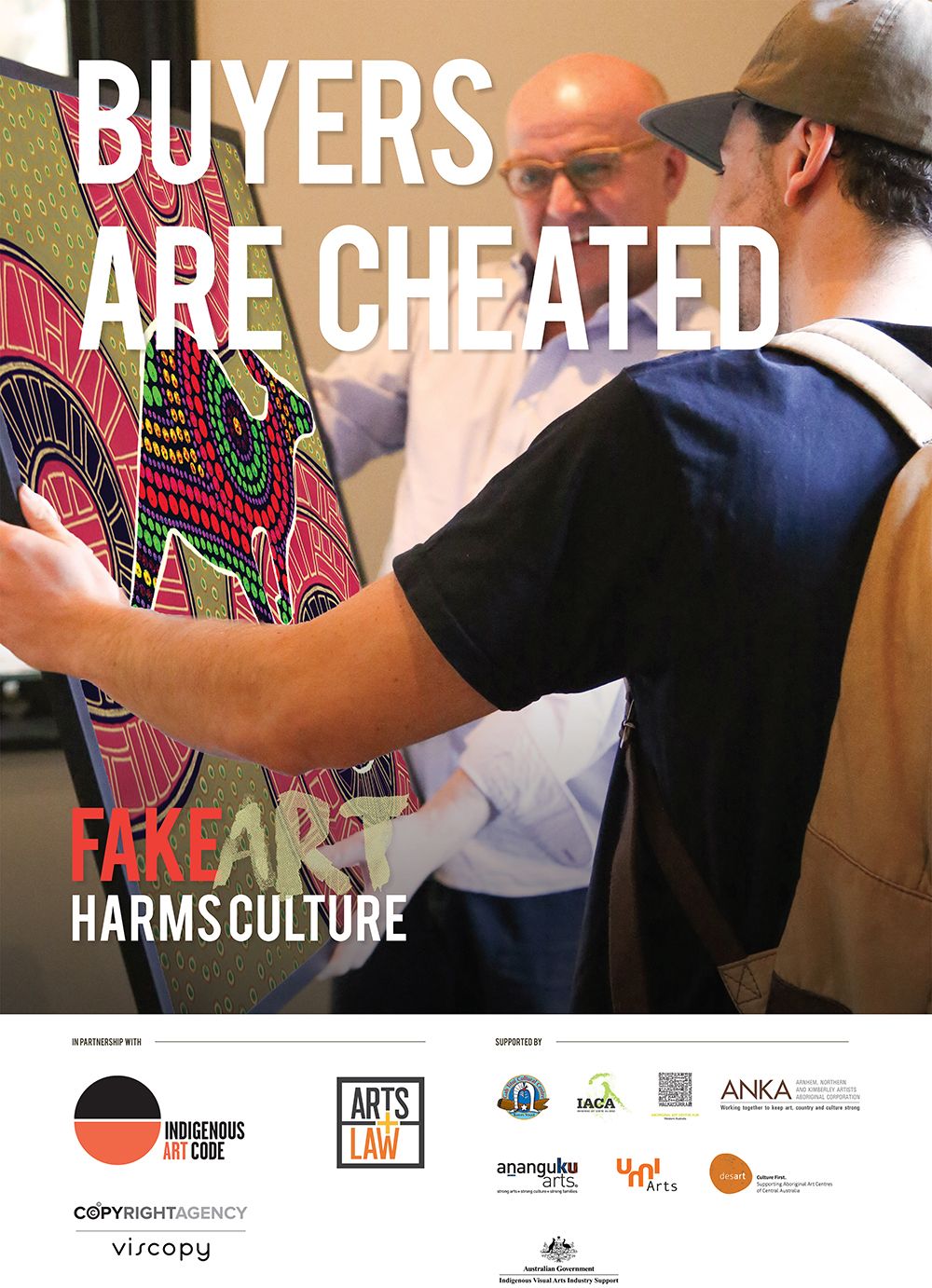
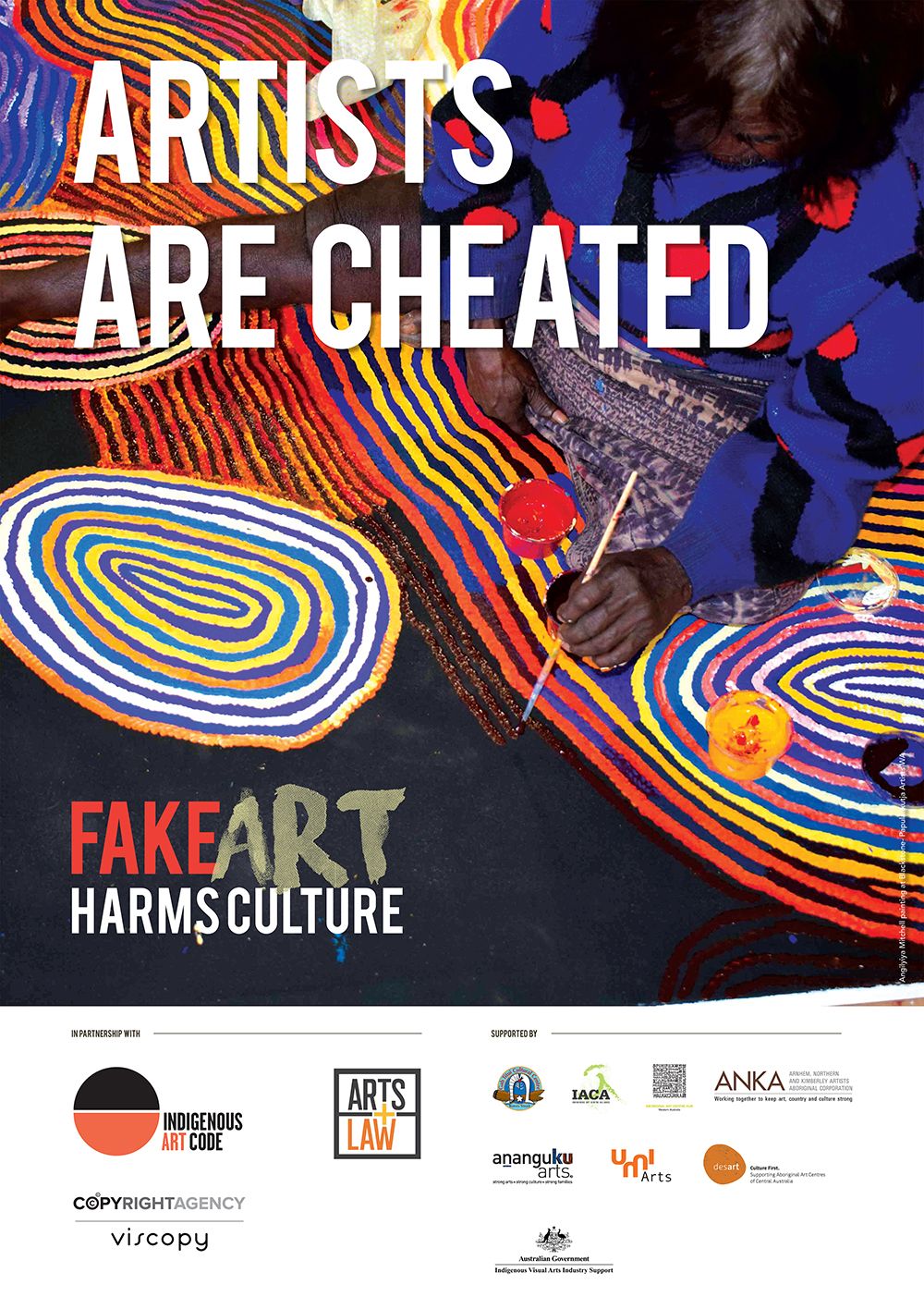
Key developments/achievements of the campaign to date
2016
- Indigenous Art Code, Arts Law Centre of Australia and Copyright Agency launched Fake Art Harms Culture campaign at Darwin Aboriginal Art Fair.
2017
- Senator Bob Katter twice introduced the Private Members Bill into Parliament, which sought to amend the Australian Consumer Law by preventing non-Aboriginal and Torres Strait Islander persons from benefitting from the sale of Aboriginal and Torres Strait Islander art and souvenirs.
- Indigenous Art Code, Arts Law Centre of Australia and Copyright Agency released a discussion paper in response to Senator Bob Katter’s Private Members Bill.[HK1]
- Almost 1000 post cards sent to then Prime Minister Malcolm Turnbull asking the Australian Government to protect Indigenous Cultural and Intellectual Property and stop the sale of fake art.
- Minister for Indigenous Affairs, Senator Nigel Scullion, referred an inquiry to the House of Representatives Standing Committee on Indigenous Affairs about the growing presence of inauthentic Aboriginal and Torres Strait Islander ‘style’ art and craft products and merchandise for sale across Australia.
- The Indigenous Art Code made a submission to the House of Representatives Standing Committee on Indigenous Affairs Inquiry along with 161 other organisations and individuals. This included a number of powerful written and video submissions from Aboriginal and Torres Strait Islander artists, artworkers and arts organisations.
2017-2019
- The House of Representatives Standing Committee on Indigenous Affairs conducted the Inquiry. The report on the impact of inauthentic art and craft in the style of First Nations peoples was tabled in December 2018.
- The Fake Art Harms Culture campaign gains significant media coverage, including a 60 Minutes investigation.
2018
- The Australian Competition and Consumer Commission (ACCC) commenced legal proceedings against Birubi Art, a souvenir manufacturer, for misleading consumers into purchasing fake Aboriginal art products.
2019
- In June, the Federal Court found that Birubi Art had falsely claimed that products it sold were hand painted by Australian Aboriginal persons and made in Australia. The Federal Court ordered Birubi to pay a $2.3 million penalty. [HK2]
- Senator Hanson-Young introduced the Competition and Consumer Amendment (Prevention of Exploitation of Indigenous Cultural Expressions) into Parliament (2019 Bill).
- Roughly 1000 postcards sent to Prime Minister Scott Morrison from the Darwin Aboriginal Art Fair, calling for changes to the law.
- Indigenous Art Code, Arts Law and the Copyright Agency, assisted by solicitor Ted Hill, appeared before the Senate Committee to present an alternate version of legislation, which would deal with secret and sacred objects, and include regulations for licensing authentic Indigenous art for products and merchandise.
2020
- Australian Government released their response to the Report on the impact of inauthentic art and craft in the style of First Nations peoples. This included an in-principle commitment to begin a consultation process to develop stand-alone legislation that would protect Indigenous Cultural Intellectual Property, including traditional knowledge and cultural expressions.
2021
Despite the significant achievements of the campaign in raising awareness of the issue we are yet to see the introduction of legislation to remove inauthentic Aboriginal and Torres Strait Islander arts and crafts from the Australian market. We are also yet to see better regulation of licensing for Aboriginal and Torres Strait Islander artists or a commitment to protection of Indigenous Cultural and Intellectual Property more broadly.
The in-principle commitment made by the Australian Government in September 2020 to begin a consultation process to develop stand-alone legislation that would protect Indigenous Cultural Intellectual Property, including traditional knowledge and cultural expressions, is encouraging. The Indigenous Art Code continues to advocate for change in this area.
Fake Arts Harms Culture in the media
- Australia’s fake art and tourist tack: Indigenous artists fight back in The Guardian by Helen Davidson, 9 August 2017.
- Dead heart: the booming trade in fake Indigenous art in the Sydney Morning Herald by Frank Robson, 8 December 2017.
- Aboriginal art scam segment on 60 Minutes, 2018.
- The impact of fake Indigenous art on local Aboriginal communities segment on 60 Minutes, 2018.
- Inside the practice of authentic Indigenous art on 60 Minutes, 2018.
- Is your Indigenous souvenir the real deal? on Choice by Rachael Hocking, 3 April 2018.
- ‘Fake art’ or cultural theft? on The Point, 5 April 2018.
- Tackling the problem of fake Indigenous art on Radio National Drive with Patricia Karvelas, 16 July 2018.
- The report on fake First Nations art: will anything change? on the Art Show on Radio National with Ed Ayres, 30 January 2019.
- Birubi Art fined $2.3m for selling fake Aboriginal art made in Indonesia in The Guardian by Lorena Allam, 26 June 2019.
- Commonwealth vows to stamp out fake Aboriginal art made in ‘sweatshops’ on ABC News by Anna Henderson and Sarah Collard, 2 September 2020.
- Fake Aboriginal Art on Behind the News, 15 September 2020.
Thank you
The Fake Art Harms Culture campaign was launched at the Darwin Aboriginal Art Fair in August 2016. It is an initiative of the Indigenous Art Code with Arts Law and Copyright Agency. Special thanks to our campaign partners Desart, Arnhem, Northern and Kimberley Artists (ANKA) Indigenous Art Centre Alliance, Aboriginal Art Centre Hub WA, Ananguku Arts, Gab Titui Cultural Centre, UMI Arts and creative agency Behaviour Change Partners for their help in executing the campaign.
Get Involved
For information on how you can contribute to the campaign visit: https://www.artslaw.com.au/fake-art-harms-culture/get-involved/
